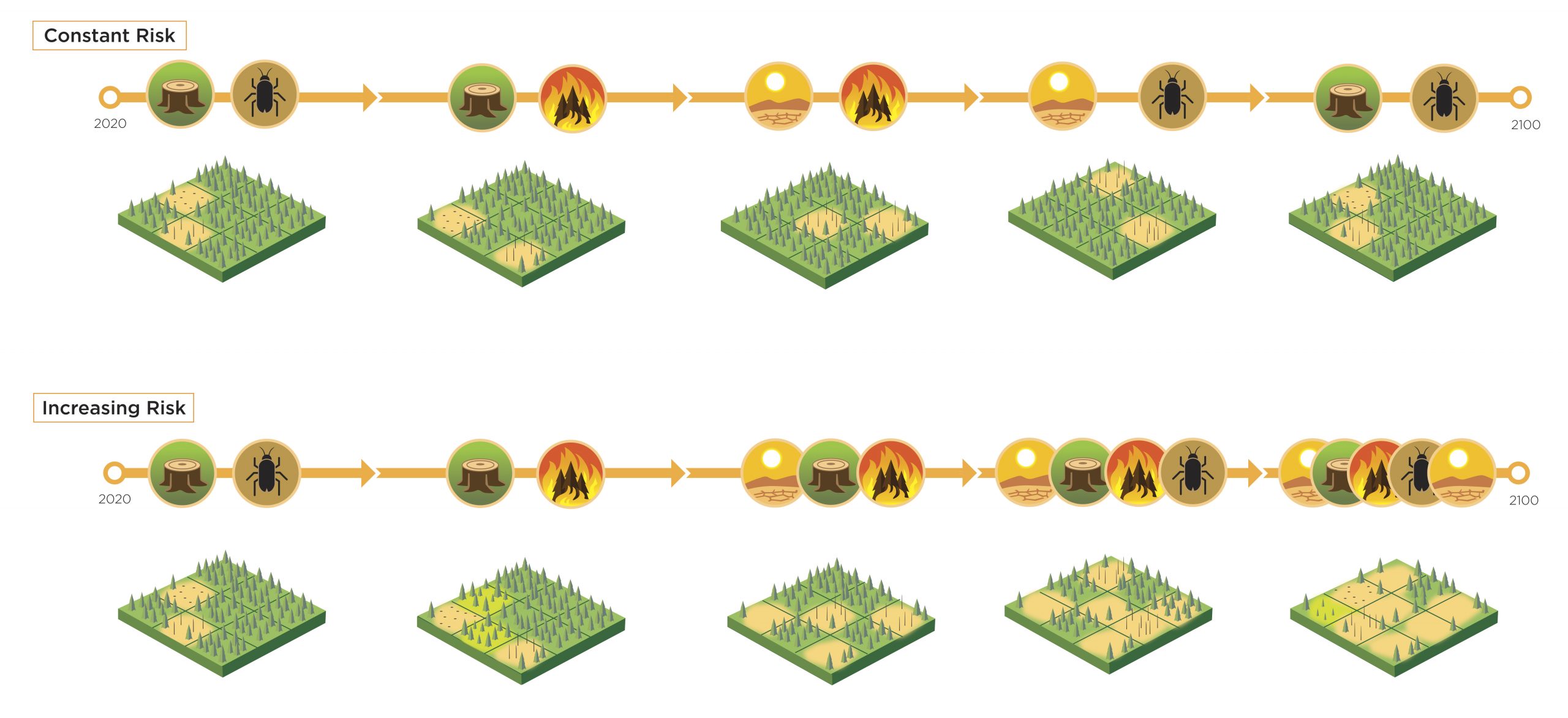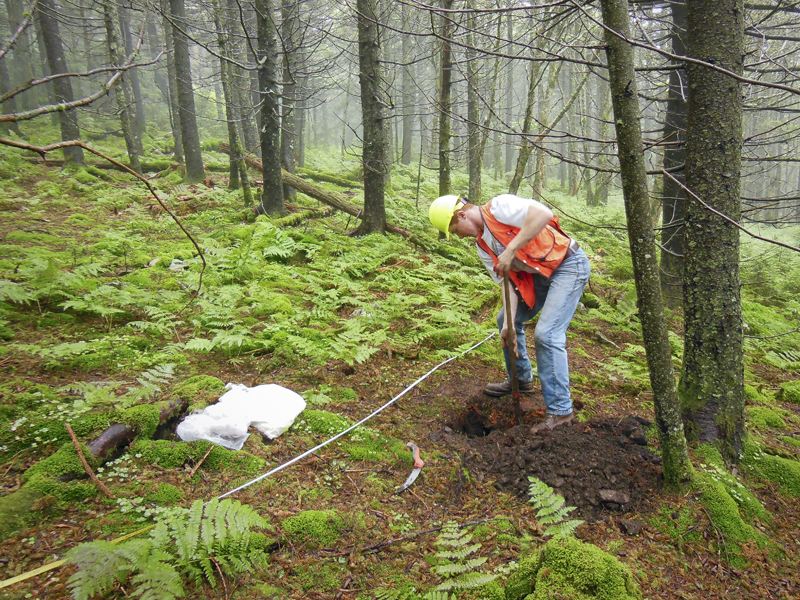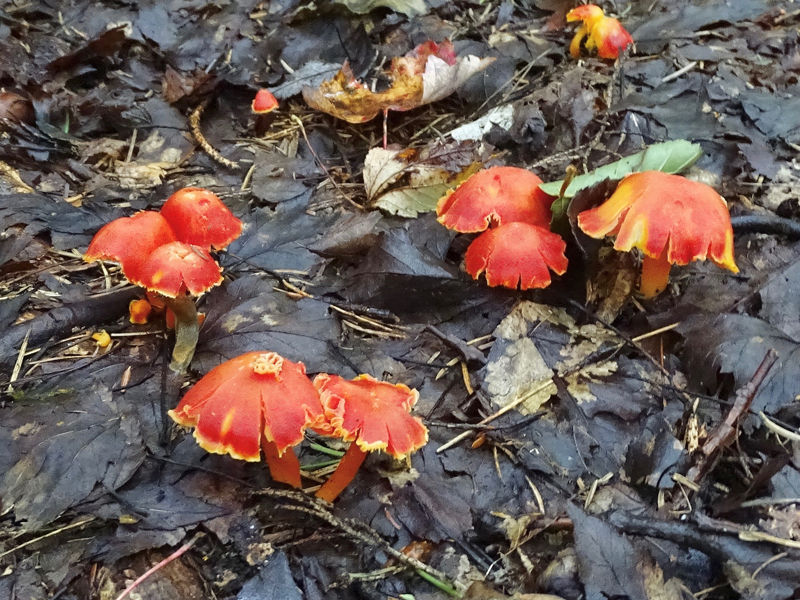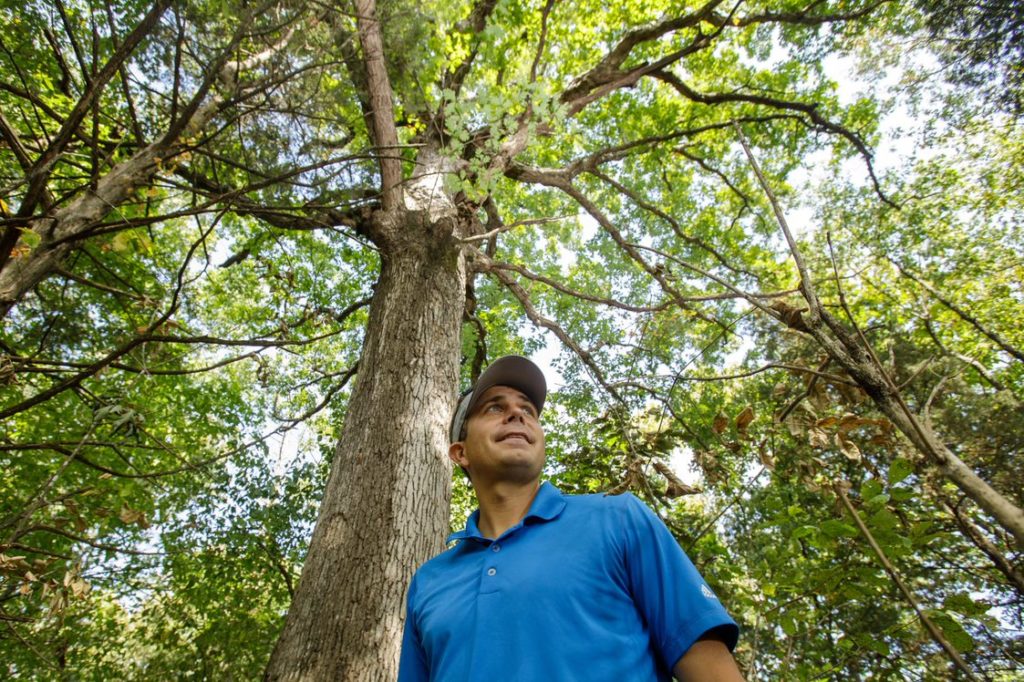Severe droughts and wildfires, invasive species, and large insect outbreaks are straining national forests and surrounding lands. A new report outlines a new approach to forest stewardship that “braids together” Indigenous knowledge and Western science to conserve and restore more resilient forestlands in the U.S.
Tag: Forest
How is deforested land in Africa used?
Africa’s forested areas – an estimated 14 % of the global forest area – are continuing to decline at an increasing rate – mostly because of human activities to convert forest land for economic purposes.
Is the Amazon forest approaching a tipping point?
Global warming may be interacting with regional rainfall and deforestation to accelerate forest loss in the Amazon, pushing it towards partial or total collapse.
New study sheds new light on forests’ role in climate and water cycle
Forests, which cover a third of Earth’s land surface, are pivotal in carbon storage and the water cycle, though the full scope of their impact remains to be fully understood. In a new study published in Nature Communications, researchers from Stockholm University and international colleagues provide new insights into the complex role forests play in the climate system and water cycle.
New Research Reveals Dynamic Factors Shaping Biodiversity at Small Scales
Researchers studying arboreal ants in a Florida forest explore the fundamental question of how resource availability and competition shape biodiversity.
UC Irvine scientists reveal what fuels wildfires in Sierra Nevada Mountains
Irvine, Calif., Sept. 25, 2023 — Wildfires in California, exacerbated by human-driven climate change, are getting more severe. To better manage them, there’s a growing need to know exactly what fuels the blazes after they ignite.
REBURN: A new tool to model wildfires in the Pacific Northwest and beyond
A new tool, REBURN, can simulate large forest landscapes and wildfire dynamics over decades or centuries under different wildfire management strategies.
Four major Illinois research institutions form a collaboration to improve urban forest drought resilience
Argonne, The Morton Arboretum, the University of Chicago and the University of Illinois Urbana-Champaign received a grant from NOAA to assess drought resilience in the urban tree canopy.
Chulalongkorn University’s “Plant Trees – Get Mushrooms” Strategy Convinces Nan and Saraburi Farmers to Save the Forests
Lecturers of the Faculty of Science, and the Center of Learning Network for Region (CLNR) Chulalongkorn University successfully planted trees in the forests in Nan and Saraburi provinces through innovative seedlings with ectomycorrhiza fungi, motivating villagers and farmers to “plant trees and get mushrooms”, for extra income.
Study looks at Impact of Native American Land Use on Forests
In a new article published in the Journal of Biogeography, SUNY Geneseo geographer Associate Professor Stephen Tulowiecki and four undergraduate researchers examined the influence of Native American land use on the composition of historic forests in the Northeastern United States. The team found that Native American settlements and land use had a lesser effect on the distribution of tree species across the region when compared to climate and soil conditions.
World’s New Stream Frog Found in Myanmar: Chula Researcher Indicates Its Ecosystem Is Intact
A biologist from the Faculty of Science, Chulalongkorn University working with researchers from Germany and Myanmar has discovered two of the world’s newest stream frogs in Myanmar highlighting the remaining diversity of ecosystems in Southeast Asia and cautions all those involved of the need to conserve our forests before our valuable wildlife become extinct.

Know the risks of investing in forests
Some governments are counting on planted forests as offsets for greenhouse gas emissions—a sort of climate investment. But as with any investment, it’s important to understand the risks. If a forest goes bust, researchers say, much of that stored carbon could go up in smoke.
Forests can be best deployed in the fight against climate change with a proper understanding of the risks to that forest that climate change itself imposes.
Why are we still failing to stop deforestation?
A new study calls for a radically different approach to managing deforestation that focuses on our understanding of how individuals make choices.

Atomic fingerprint identifies emission sources of uranium
Uranium is not always the same: depending on whether this chemical element is released by the civil nuclear industry or as fallout from nuclear weapon tests, the ratio of the two anthropogenic, i.e. man-made, uranium isotopes 233U and 236U varies. These results were lately found by an international team grouped around physicists from the University of Vienna and provides a promising new “fingerprint” for the identification of radioactive emission sources.
Study Maps 1790s Distribution of American Chestnut in WNY
The American chestnut tree was made functionally extinct by an invasive blight fungus in the early 1900s. Work is currently underway to develop a blight-resistant variety through breeding and genetic engineering. With the potential reintroduction of American chestnut in the Eastern United States, SUNY Geneseo assistant professor of geography Stephen Tulowiecki, mapped the historical location of chestnut using land surveyors from 1797–1799. His research appears in the journal Forest Ecology and Management.

Forest soils recovering from effects of acid rain
Study shows improvement of soils and streams in the southern Appalachians

Fungal decisions can affect climate
Research shows fungi may slow climate change by storing more carbon
How to fight illegal cocoa farms in Ivory Coast
The world’s love for chocolate has helped decimate protected forests in western Africa as some residents have turned protected areas into illegal cocoa farms and hunting grounds.

UK Partners With Bourbon Industry Leaders to Map White Oak Genome
Bourbon isn’t bourbon without the mighty white oak. Distillers have been aging bourbon in oak barrels as far back as the Roman Empire. Oak barrels give bourbon its unique caramel, vanilla, nutty and toasted flavors. Kentucky distillers rely especially on the white oak. But what if disease hits the species? How would industry professionals protect it? The University of Kentucky College of Agriculture, Food and Environment is partnering with Maker’s Mark Distillery Inc. in Loretto, Kentucky, and Independent Stave Company to research the DNA of the white oak.